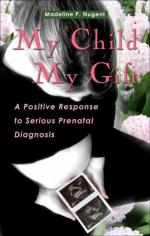|
This section contains 789 words (approx. 3 pages at 300 words per page) |

|
Prenatal diagnosis, assessing the condition of a fetus before it is born, has become an important--although controversial--part of pregnancy care. Increasingly sophisticated technology adds to the variety and accuracy of prenatal tests.
The earliest prenatal testing was simple. The mother noted activity inside her womb; the physicians felt it from the outside. Machines were developed for listening to the fetal heartbeat and diagnose fetal "stress;" the 1950s saw development of amniocentesis and the ability to culture cells from amniotic fluid in the 1960s allowed identification of chromosomal disorders--specifically Down's syndrome--and today, a wide range of metabolic and chromosomal disorders can be detected through tests such as ultrasound, chronic villus sampling (CVS), Bart's triple test, maternal serum screen (MSS)/alpha-fetoprotein (AFP), umbilical vein sampling/cordoncentesis, fetoscopy, and genetic counselling.
Ultrasound scanning has had the most comprehensive effect on prenatal testing. Sound waves produce a picture...
|
This section contains 789 words (approx. 3 pages at 300 words per page) |

|


